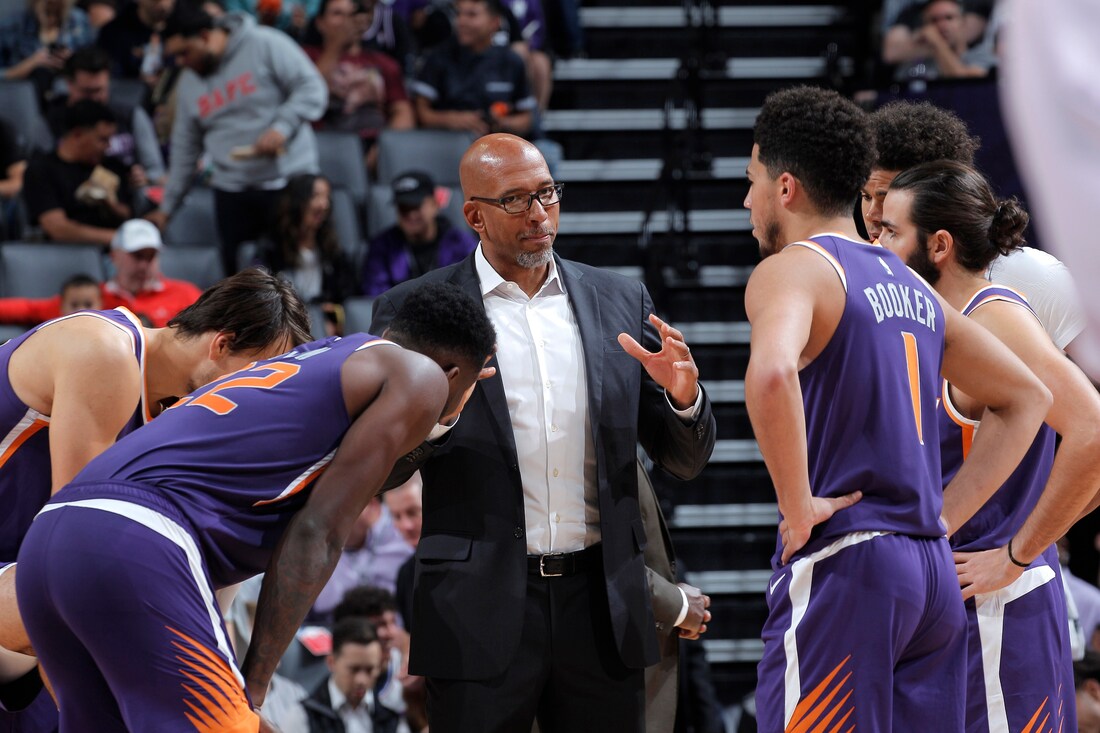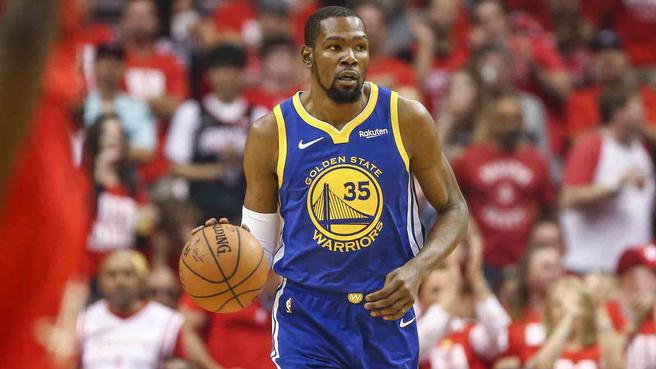|
This article is a facsimile of an earlier publication on The Basketball Writers (TBW), which recently closed its doors. How do great shooters get open when everyone in a 20,000-seat arena knows they are looking to snipe from three?
Some are fantastic cutters, some are able to change direction quickly and others are simply low priorities for defenses based on their teammates. But in most instances, choreographed offense helps get them open in ways they need. Off-ball screens are prevalent at high levels of basketball, and shooters are frequently used in down screens. Put two screeners together and the action is called a stagger, where both teammates stand one in front of the other to help free up their fellow shooter. You can watch any NBA game and see a stagger run at some point. Most teams will teach defending a stagger in the following manner:
0 Comments
This article is a facsimile of an earlier publication on The Basketball Writers (TBW), which recently closed its doors. When Monty Williams was named head coach of the Phoenix Suns, their defense was due to get on a better track if for no other reason than his history of competency there.
But five games into this young season, the Suns sit at 3-2 record-wise and sixth in Synergy's half-court defense efficiency metrics. A small sample, for sure, but the revelations from film prove some of the summer's adjustments to this roster are creating a meaningful and lasting change. That's allowed the Suns to beat the Los Angeles Clippers, to take the Denver Nuggets to overtime on the road and drop a 96-95 contest to the Utah Jazz–three of the league's top groups. Why is such a development worth noting this early into the campaign? This was supposed to be one of the bottom two teams in the league (along with the Charlotte Hornets). While there's a lot of time for the bottom to still fall out, perspective and history matter, and the changes in Phoenix's approach are drastic in a short amount of time. A year ago, they finished 29th in defensive rating and were dead last a season prior. They have been 25th or worse each of the last four seasons and haven't been a top-half defense since the 2006-07 campaign. This article is a facsimile of an earlier publication on The Basketball Writers (TBW), which recently closed its doors. We're doing it again...
Seriously. As a collective, the entire basketball universe is overlooking the brilliance of Blake Griffin. Over the last two seasons, he is shooting 35.5 percent from three and 50.6 percent from inside the line. The knock-on Griffin several years ago was his lack of outside game, but now he's a plus creator out of ball screens and in spot-up situations, completing his offensive arsenal. He's also a career-long contact magnet and was fourth in NBA-wide free throw attempts per game during 2019. Cleaning the Glass has a new feature in regards to foul-drawing, and Griffin has been in the top five percent across the league every season of his career in drawing non-shooting fouls. He's in attack mode so much, and that makes the high efficiency he scores with all the more impressive. The ball screens and ball-handling improvements, along with the increased three-point shooting, are notable to the common eye. Watch the Detroit Pistons play, and Griffin is the focal point of every attack when he's on the floor. This article is a facsimile of an earlier publication on The Basketball Writers (TBW), which recently closed its doors. Twitter is an interesting world.
The long-time debate regarding analytics informing shot selection jumped to the forefront once again on Tuesday, as two drastically different worlds chimed in from their respective camps. Matt Moore, (also known as Hardwood Paroxysm and a writer for the Action News Network), responded to a video debate about Zach LaVine and the mid-range effectiveness posted by ESPN's Rachel Nichols. Then Kevin Durant, one of the best mid-range shooters of our time, responded with his take on the situation. This article is a facsimile of an earlier publication on The Basketball Writers (TBW), which recently closed its doors. It's not often we gush about low-usage role players making the difference on a new team, but this maybe should be the exception.
Kyle Korver and the Milwaukee Bucks are a match made in heaven. Long coveted for his three-point shooting prowess, Korver signed a deal with the Bucks this summer to help provide spacing to their offense and a veteran presence for the postseason. What drew Korver to Milwaukee when other elite teams and destinations came calling? Certainly his relationship with Bucks coach Mike Budenholzer. Even with a small role—the 38-year old is noticeably compromised on defense and will be a low-minute specialist, after all—Korver can make a massive impact on Milwaukee's offense thanks to his familiarity with the scheme and how such an offense contributed to his best years. He may be past his prime, but there's still plenty in the tank for Korver to snipe threes deep into the playoffs. |
Adam SpinellaHead Boys Basketball Coach, Boys' Latin School (MD). Archives
September 2021
Categories |


 RSS Feed
RSS Feed
